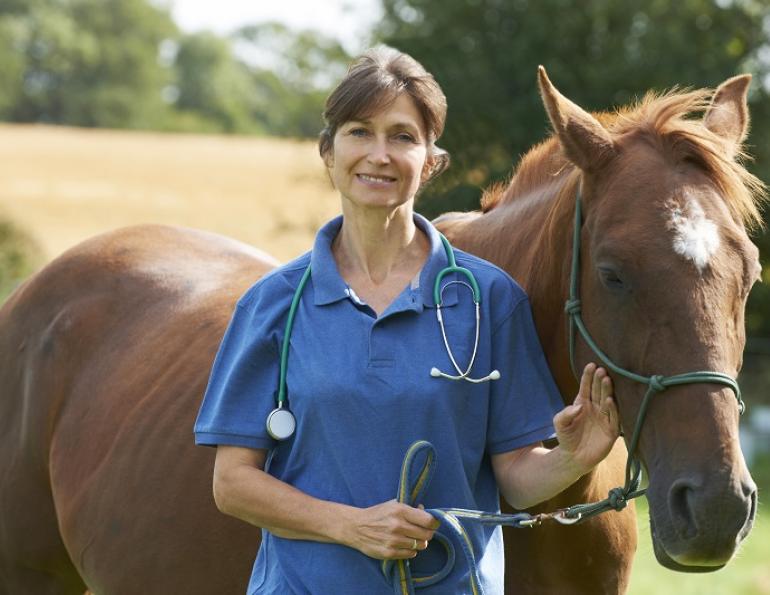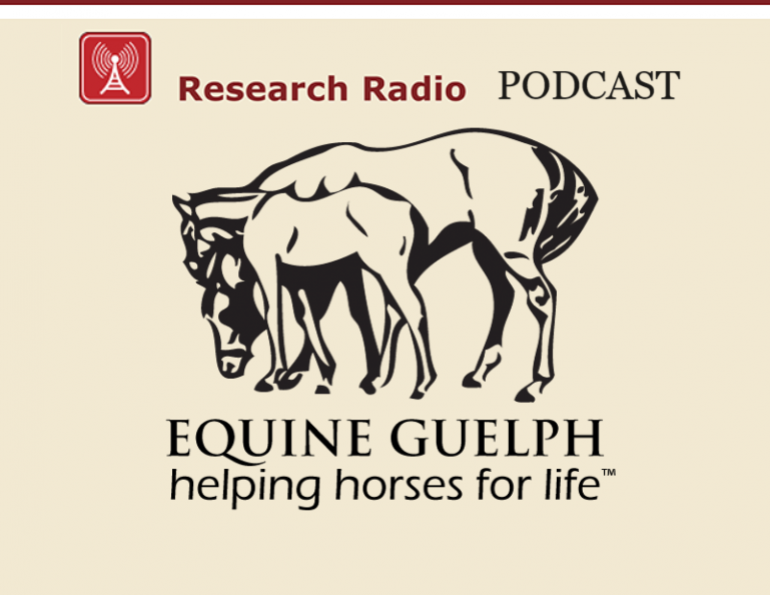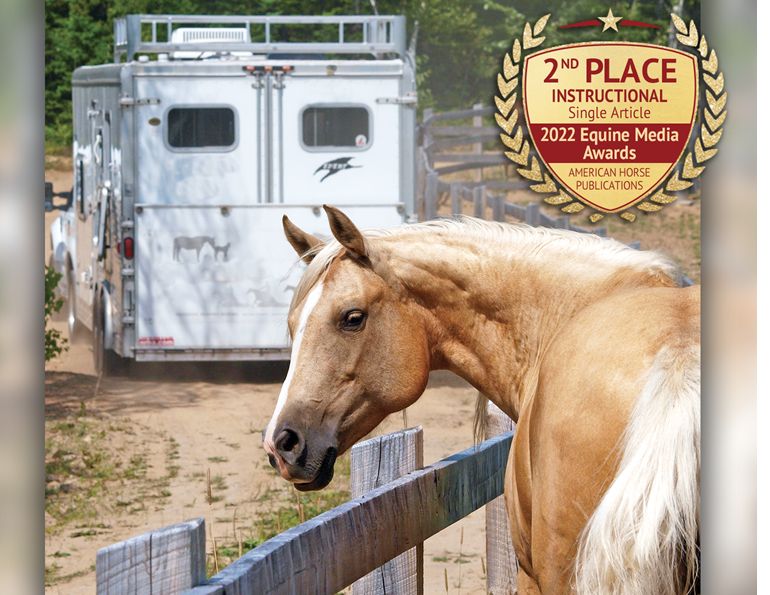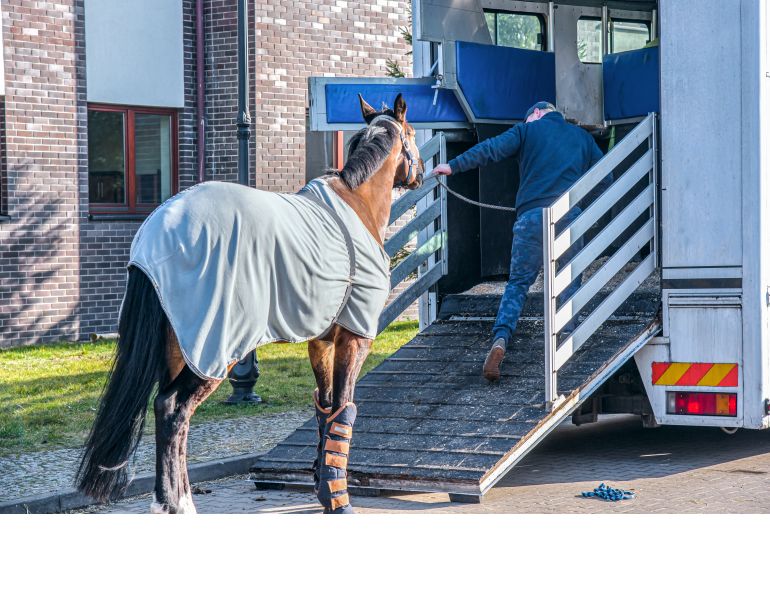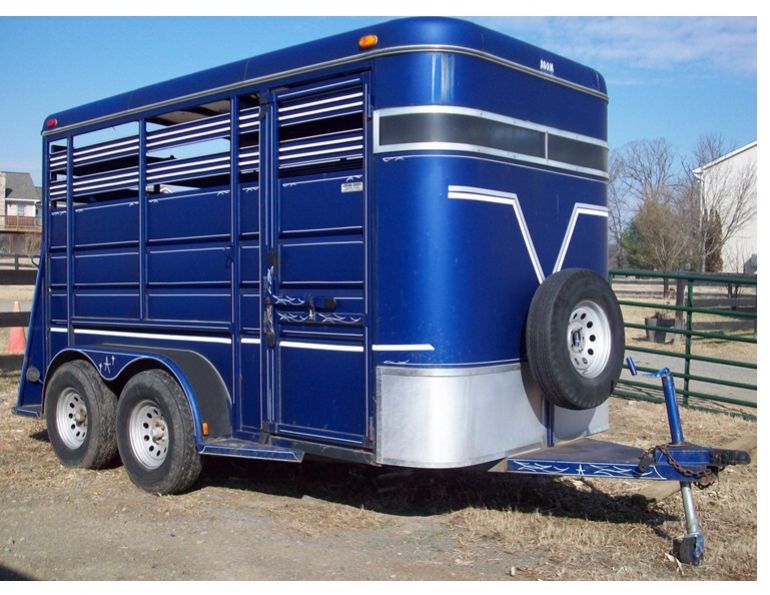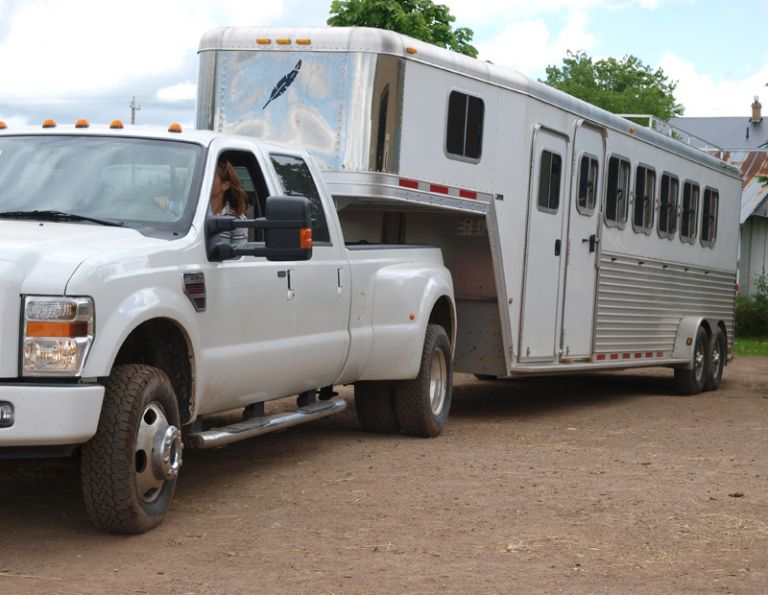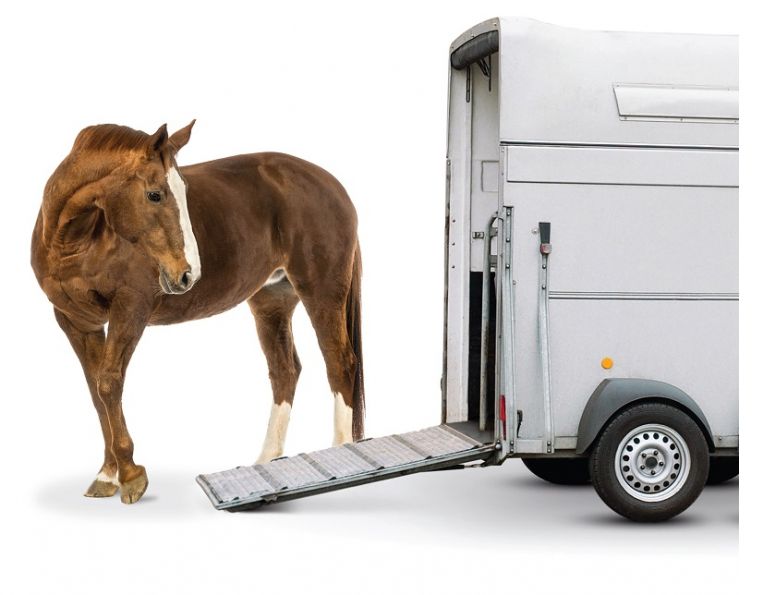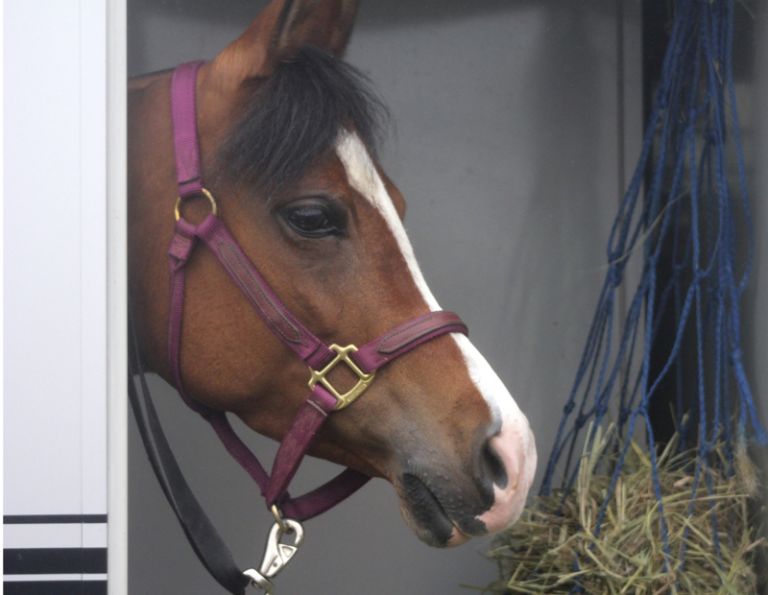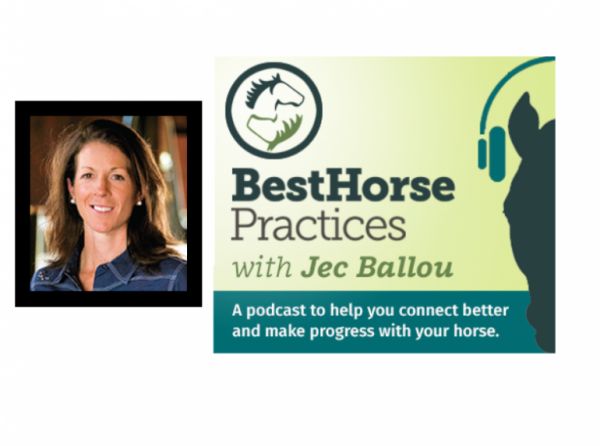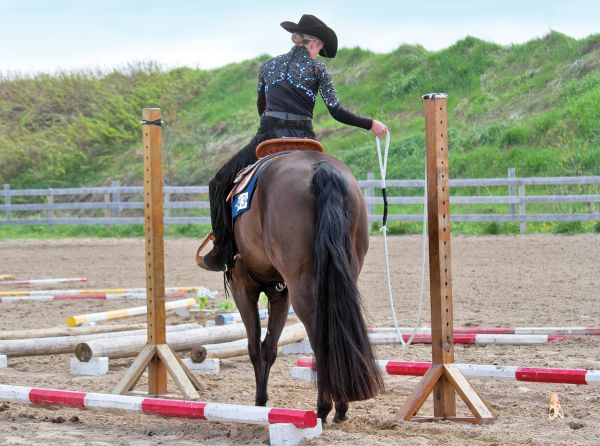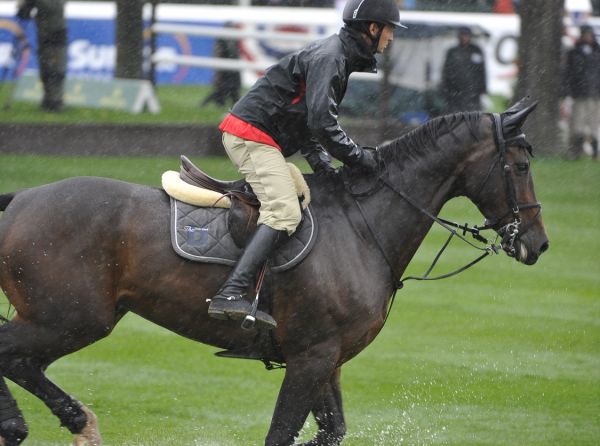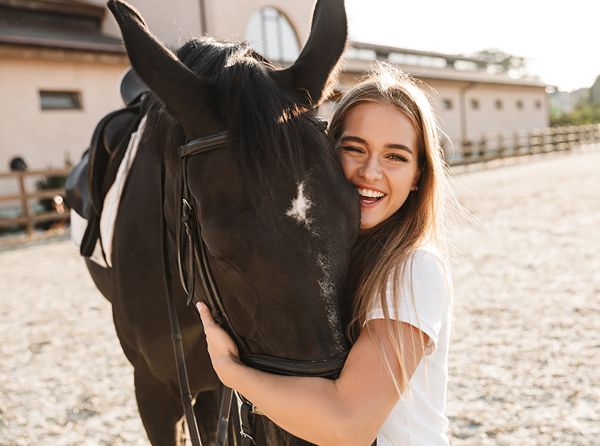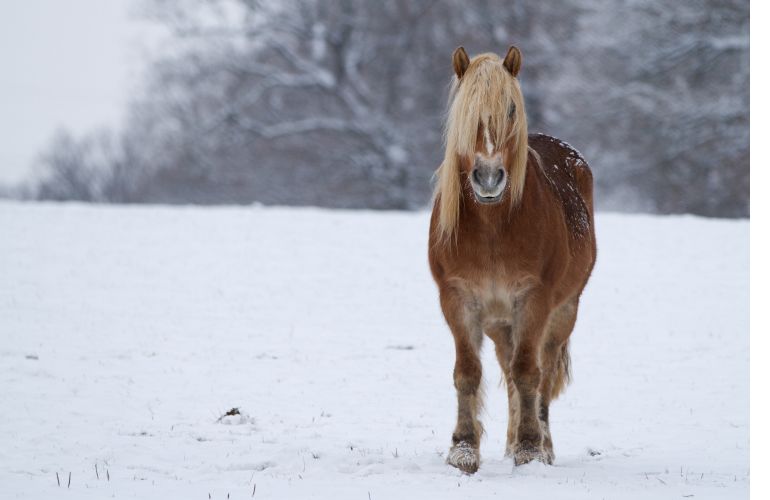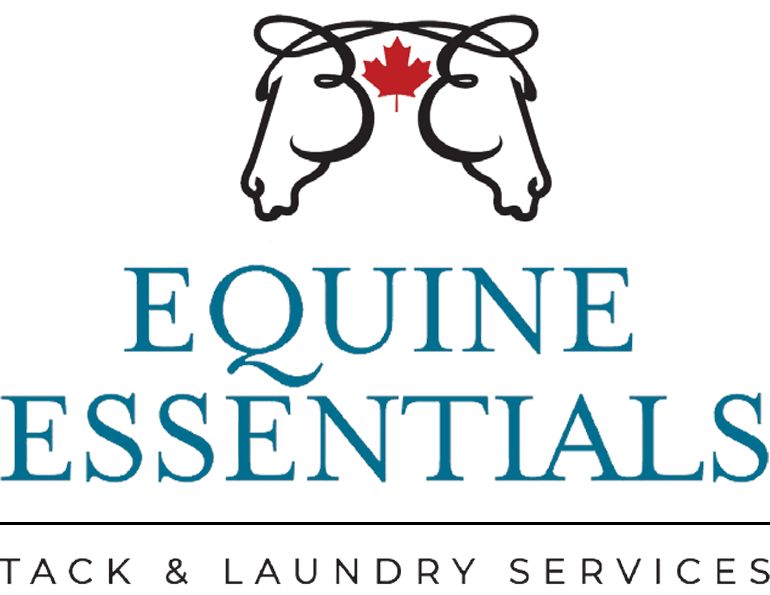By Kevan Garecki
While there is an abundance of information available on general trailering needs, precious little has been offered on “special needs” transport for horses such as stallions, pregnant mares or those with foals at side, and injured or lame horses.
There are few absolutes with horses, but here are some guidelines to keep in mind at all times:
- I haul loose whenever possible; this means that the horses are not tied while in transit. I may tie while loading and unloading to ensure that everyone behaves, but on the road I prefer to allow the horses to lower their heads, look around, and enjoy as much freedom as is safe. The tying debate was answered most recently in studies conducted by the University of California, Davis: loose is better, whenever it’s safe to do so.
- Keep feed in the bags, water in the buckets, and bedding on the floor, except as indicated by medical or other special circumstances. Having free access to food and water reduces transport-related stress and the related ill effects thereof. Bedding reduces road noise and vibration, provides a more secure footing, and soaks up much of the urine.
- Tranquilizing horses for transport is not only unsafe, but simply an excuse for not preparing the horse properly in the first place. Tranquilized horses do not travel well and many will retain the sensations from the trip and can associate the loss of control, dizziness, and lack of balance with the trailer. Enlisting the help of a professional can be more rewarding than resorting to drugs and results in fewer health risks for the horse. There are some instances in which tranquilizing a horse for travel may be the best option — either for the horse’s safety or other concerns — but that is a decision that should involve a veterinarian’s input.
Stallions
While stallions themselves require little special treatment in transit, the safety of other horses transported with them might need some consideration. Floor-to-ceiling dividers can prevent problems before they occur. By simply not allowing any contact between the stallions and the others on board, we maintain a reasonable level of safety for everyone.
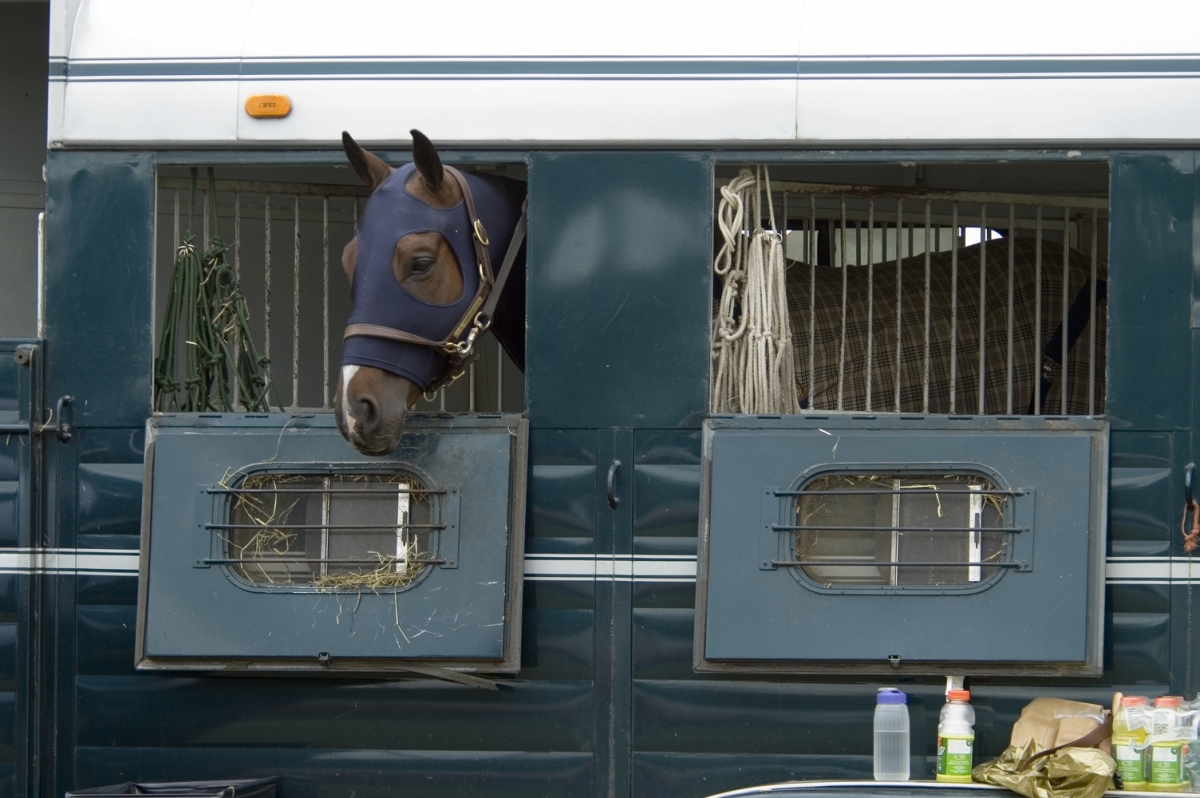
Stallions may require extra care when trailering, especially if travelling next to other horses. Floor to ceiling dividers work well to prevent problems arising with other horses. You may also wish to leave a space between the stallion and the next horse. Photo: ChristinaHandleyStock.com
Some stallions are fine being allowed to move around, so they can often enjoy the freedom of a full box stall. Others will react simply to the presence of another horse close to them, and with these horses I’ll either leave an empty stall next to the stallion or use a blackout curtain to further segregate the stud. Some stallions will use the space to run themselves into a frenzy, so for them I’ll put up a “stud cage,” which is essentially a standing stall surrounded with floor-to-ceiling dividers. The stud can often be loose in this arrangement without compromising his safety or that of others on board, but particularly aggressive horses may still need to be cross-tied as well. If there is any chance the stud may become violent or aggressive, then he should remain in cross-ties at all times; it’s easier to take a few extra precautions than to deal with a wreck along the way.
For those with angle haul trailers faced with moving studs and other horses together, load the stallion first, leave an empty stall, and then load the rest of horses behind. Blacking out the head portion of the divider can serve to keep the stud calmer during both loading and travel.
The old saying goes: “Tell a gelding, ask a mare, discuss it with a stallion,” but the last thing I want in my trailer is a “discussion” with 1200 pounds of testosterone-fuelled attitude! Extra caution is always prudent when dealing with stallions.
Mares in Foal, or with Foals at Side
Except in an emergency, it is generally inadvisable to transport a mare that is due within the next 30 days. This is only a rough guideline, as many cases have circumstances that can directly impact traveling safety. If you are faced with transporting a mare approaching her due date, I urge you to discuss the trip in detail with your vet beforehand.

If it’s necessary to separate mare and foal during transport, a partial or “jailbar” partition works well. Photo: Kevan Garecki
Mares in foal should be afforded the same consideration as a lame or ill horse. This simply means additional bedding (at least 10 to 15 centimetres of bedding for most trips, more if certain conditions predict) and always loose in a box stall. The box stall can be duplicated in almost any trailer, from a two-horse straight or angle haul to a stock trailer. Most trailers offer the flexibility of removing or tying a divider back to the wall, thereby allowing space for the horse to move freely. Remember to check for protrusions and other potential injury sites if dividers are removed.
Mares with foals at side are usually quite careful about where their babies are at all times while in transit, but some can allow the stress of traveling to eclipse their maternal instincts. The more room you can offer mom and baby, the better! Sixty square feet is minimal for the average mare and foal, with space requirements increasing to accommodate older foals and/or larger horses. Foals will usually nurse while on the road, so make sure the mare has room to move accordingly to facilitate nursing. On longer trips, babies tire quickly and will frequently lie down. It is imperative to provide adequate rest stops on longer trips, so the foal can rest or nurse comfortably without having to balance.
If the mare is reluctant to load, load the foal first and the mare will usually follow. In the case of a sick or injured foal, it may be advisable to separate mom and baby during transport. The mare will be considerably calmer if she can see her foal, so a partial or “jailbar” partition is best.
As many horses will go off their water on longer trips, either bring water from home, or prepare the mare by tainting her water supply with apple juice a week prior to transport. You can then taint “strange” water with the juice, thereby masking the smell and taste of the water you will encounter along the trip. Another alternative is to offer bottled water to the horse. I’ve done this whenever I encounter a horse that still refuses to drink after the second day on the road. It may sound extreme, but dehydration combined with the stress of travel can dramatically affect milk production. Just a few hours without nursing can create a potentially lethal situation for a young foal. Bottled water is cheap by comparison.
Lame, Ill, and Injured Horses
When the need arises to transport a sick or injured horse, time is usually of the essence and we tend to miss steps unless we are thoroughly prepared in advance. As with mares and foals, space is important to both the wellbeing and safety of the horse. It is inadvisable to restrain a sick or injured horse in transit. Their survival instincts can be a lot stronger than your trailer, inviting disastrous results.
Horses in the throes of colic are best left alone while on the way to the vet. Remove dividers to create the largest box stall you reasonably can and remove all food and water. Never tie a colicking horse; if they go down, just leave them and drive. I don’t advise riding in the trailer with a sick or injured horse; there is little anyone can do anyway, so it’s best to concentrate on what we can do, which is get them to the vet. There are exceptions where having an attendant in the trailer is necessary, but these are specialised situations best addressed by your vet.
Horses that are unable to stand are at risk for other complications during transport, particularly on trips of more than a few hours. It may be necessary to blanket the horse prior to loading, provide additional bedding, or even use hot water bottles or cool compresses if temperature extremes are expected. Whenever I have questions about transporting a sick or injured horse, I consult my vet first.
Most lame or injured horses will prefer to take the most comfortable stance and stay put, but a few extreme cases will opt for some rather unusual behaviour. I moved a Shire mare recently who had lacerated her left hind leg and had to be rushed to a nearby vet clinic. The injury was excruciatingly painful, as she hobbled on using only her remaining three good legs. I watched her closely in the monitor as we started out and chuckled when she discovered her own solution: she wiggled her butt into a corner, camped under with her forelegs, and then lifted the injured leg off the floor using the two walls of the trailer to support her bum. Not only was she quite steady in that position, but she could actually relax somewhat. Horses in severe pain will often lie down rather than deal with the “balancing act.” This is your cue to use extreme caution in driving!
At the risk of beleaguering the topic, adequate bedding is important when transporting horses, but essential when transporting an injured horse. Rubber mats can become slick and the last thing an injured horse needs is to complicate things by having to dance around on a slippery floor. Base the amount of bedding on what you might use in a stall and then double it for transport. Bedding is cheap, horses aren’t. If dust is a potential problem, take a moment to dampen the bedding by hosing it down slightly.
The most effective approach we can take when transporting a sick or injured horse is towards our own driving. Corners, bumps, rifts in the road, braking, and accelerating should all be navigated with calm collection and a steady hand. If you have to slow down more than usual to navigate turns or even bumps on the road, then do so. Should the traffic behind become excessive, try to find a smooth area to pull off or allow those waiting to get around you. If not, don’t let their impatience dictate your driving. I’m not ignorant of traffic when hauling injured horses, just more concerned with the horse than the traffic behind me.
The take home message is to think each special situation through carefully and take nothing for granted when it comes to the safety and comfort of the horse. Every time a horse has an unpleasant trailering experience, it puts a brick in the wall you’ll eventually hit when trying to load that horse again one day.
Blanketing and Wrapping Horses for Transport
By Ashley Griffin
The need for a blanket in the trailer will depend on the weather conditions, type of trailer, and ventilation available. In a well-ventilated trailer on a warm day, you won’t need to blanket your horse. Even in cold weather, having a heavy blanket on the horse in a poorly ventilated trailer can cause horses to sweat and become overheated. In general, don’t over-blanket and keep the air moving inside the trailer so your horse can have a comfortable ride.
It is also customary to cover a horse’s legs when trailering. This can be done with either shipping boots or stable wraps. Wraps or boots that extend from the knee or hock to the coronary band can help protect your horse’s lower legs during a trailering trip. However, if you choose stable wraps, be sure you know how to properly apply them, as they can cause injury and permanent damage when not applied properly. Shipping boots should be the right size and attached securely so they do not come undone or shift excessively while during travel.
Give your horse the opportunity to become accustomed to having his legs wrapped before being hauled in the trailer. Many times, horses will kick and stomp when first wearing leg wraps.
Reprinted with permission from www.extension.org.
Trailer Maintenance
By Melanie Huggett
It’s important to thoroughly check over your trailer at least once a year and do any required maintenance or repair work to ensure that your trailer is ready when you need it. Failing to maintain your trailer in good working order can end in disaster, and regular maintenance is much more cost-effective in the long-term. Spring is a perfect time to do yearly checks and maintenance, before the riding and show season gets into full swing.
Regular maintenance will extend the life of your trailer and ensure it is safe for your horse to travel in.
Check over the whole trailer inside and out for any rust, corrosion, or pitting. Small rust patches are usually not an issue, but should be cleaned and repainted to prevent the rust from spreading. Extensive rust, corrosion, or pitting may compromise the strength of the trailer and should be looked at by a professional and repaired if necessary.
Remove the rubber mats and bedding from the floor of the trailer and thoroughly examine it. If your floor is wood, use a sharp object to test it for rot; if the wood is soft or crumbles, the boards will need to be replaced.
Examine all welds for stress fractures, and ensure all bolts and screws are tight. Remember to check the roof, and underneath the trailer as well. Springs, axles, and tires, including the spare tire, must all be in good working order.
Thoroughly inspect the hitch for any signs of wear or tear. The hitch and truck ball must hook up perfectly in order to be safe.
Make sure the brake lights and turn signals are working, and replace light bulbs as needed. If replacing a bulb does not solve an issue, check for electrical wiring problems.
The manual provided with your trailer may have specific instructions for maintenance, which you should make sure you follow.
If you have any concerns or aren’t sure you are up to properly inspecting or repairing your trailer yourself, take your trailer to a professional.
In addition to yearly maintenance, the following should be checked before every trip, before loading the horse:
- Lights and turn signals
- Brakes
- Hitch — is it secure?
- Safety cables
- Tires — are they properly inflated?
- Spare tires and tools to change a tire are onboard
Last but not least, always do a final walk-around your truck and trailer after loading and before driving off to check that your rig is ready for the road, windows and doors are secure, and all gear has been stowed safely away – every time, every trip.
Main photo: ©Canstockphoto/Egonzitter




